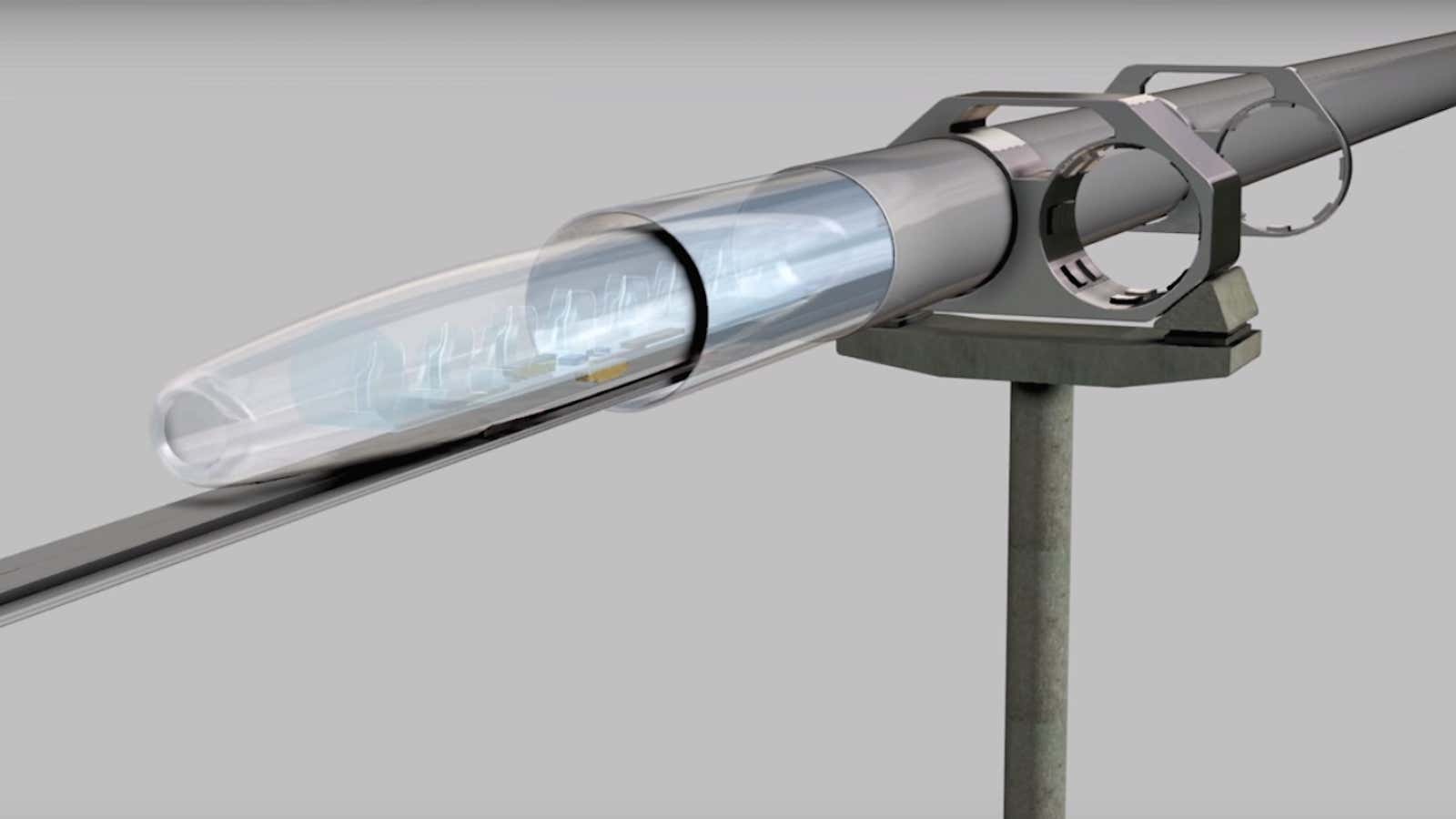Hyperloop Transportation Technologies (HTT) announced that it will use a passive magnetic levitation system to make a “train” that can travel at over 700mph and is safer than conventional high speed trains, which currently reach speeds of just under 300mph.
Most of the company’s competitors have proposed building a Hyperloop system using technology in which a magnetic field is used to propel a floating pod through a depressurized tube. Elon Musk, who initially put forward the Hyperloop idea, released a proposal in 2013 outlining how this technology could work, setting off a race among tech startups to make the Hyperloop a reality.
HTT, one of the startups inspired by Musk’s proposal, went beyond the Tesla CEO’s original vision of using compressed air to lift pods and sought out technology developed more than a decade ago by a physicist named Richard Post at Lawrence Livermore National Labs. This “passive magnetic levitation technology,” which Post called Inductrack, relies on an array of magnets on the bottom of the pods that create lift when the pods are in motion.
HTT claims that using passive magnetically induced levitation will be cheaper than the magnetic levitation system used in existing high speed trains, called Maglev, which requires costly power sources be built along the track. The company also says that tests run at Lawrence Livermore confirm the technology will make their pods much safer than current high speed trains.
“Levitation occurs purely through movement, therefore if any type of power failure occurs, [magnetically induced] Hyperloop pods would continue to levitate and only after reaching minimal speeds touch the ground,” HTT COO Bibop Gresta said in a statement.
HTT has licensed the technology, which is called Inductrack. Plans to make the Hyperloop a reality by 2020 are already underway, according to the company’s CEO, Dirk Ahlborn. In March, Ahlborn said HTT will likely build its first system in Slovakia, due to attractive government policies in the country, but that the company’s ultimate goal is to build a track between Los Angeles and San Francisco.
HTT’s announcement heightens the stakes in the Hyperloop race. Hyperloop Tech, one of HTT’s competitors, plans to make what it calls “big announcements” later today (May 10), according to the company’s Twitter account.
Correction: An earlier version of this story incorrectly stated that HTT’s technology differed from Musk’s original proposal in that it required power stations be built along the track.
